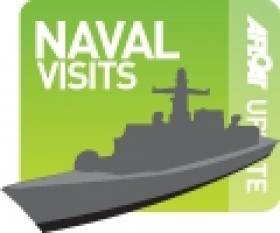Displaying items by tag: Ice conditions
Finnish Minelayer to Visit Cork
The Finnish Navy minelayer FNS Hämeenmaa is to dock in the Port of Cork at the city's central North Custom House Quay tomorrow morning, writes Jehan Ashmore.
FNS Hämeenmaa entered service in 1992 and measures 1,450 tonnes, she is the namesake class of two minelayers, the second FNS Uusimaa was also built by Finnyards in the same year.
At nearly 78m long the steel hulled vessels which have an alloy superstructure are designed to operate throughout the year in the demanding Baltic Sea conditions and the in the archipelago's.
They have an ice operating classification of ICE-1A and for military purposes they became one of first Finnish Navy vessels to incorporate stealth technology features. The pair are primarily tasked for minelaying duties but they also provide roles acting as an escort, transport and depot ships.
Armament comprises of 1 × Bofors 57 mm dual-purpose gun, 1 × eight-cell ItO 04 surface-to-air missile launcher, 2 × anti-submarine rocket launchers, 2 × depth charge rails and 100-150 sea mines (four mine laying rails).
Based in Pansio, the 20 knot vessels each have a crew complement of 60 personal. In total the Finnish Navy has around 2,100 officers, officer specialists and warrant officers, military personnel and civilian's workers.
On an annual basis close to 3,900 conscripts, of which approximately 30 are women volunteers do their military service in the navy. In addition about 3,400 reservists are trained yearly in naval refresher courses.





























































